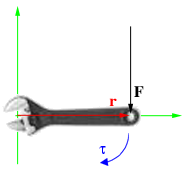Fastnet Rock (Irish: An Charraig Aonair - Rock of Solitude) is a small clay-slate island with quartz veins and the most southerly point of Ireland, 6.5 km southwest of Cape Clear Island (Oileán Chléire) in County Cork, which is itself 13 km (8 miles) from the mainland. It lies in the Atlantic Ocean 11.3 km south of mainland County Cork, at latitude 51.37ºN.[1] It rises to about 30 m above low water mark. Study of the documentary record suggests that the name is from Old Norse Hvastann-ey 'sharp tooth island'.
 Divided into Fastnet Rock proper and the much smaller Little Fastnet to the south by a 10 m (30 ft) wide channel, it also had the nickname 'Ireland's Teardrop' as it was the last part of the country seen by Irish emigrants to the United States in the 19th Century as they sailed past it.
Divided into Fastnet Rock proper and the much smaller Little Fastnet to the south by a 10 m (30 ft) wide channel, it also had the nickname 'Ireland's Teardrop' as it was the last part of the country seen by Irish emigrants to the United States in the 19th Century as they sailed past it.
The Fastnet Rock is used as the midpoint of one of the world's classic offshore yachting races, the Fastnet Race, a 979 km (608 mile) round trip from Cowes, round the rock and back to Plymouth.
The First Lighthouse In 1847, over 90 lives were lost when an American packet ship was lost off nearby Crookhaven. The Commissioners of Irish Lights decided to place a lighthouse on Fastnet. This first tower was  made of cast-iron plates bolted together, and lined with brick. This lighthouse came into use in 1854, but by 1868 had to be reinforced with an outer iron casing, this time lined with masonry. This was still too weak to withstand the Atlantic gales, and in 1881 the upper section snapped off in a storm.
made of cast-iron plates bolted together, and lined with brick. This lighthouse came into use in 1854, but by 1868 had to be reinforced with an outer iron casing, this time lined with masonry. This was still too weak to withstand the Atlantic gales, and in 1881 the upper section snapped off in a storm.
The Granite Lighthouse
The present lighthouse was designed in 1891 by William Douglass. It took more than five years to build and was finally completed in 1904. It is the tallest and widest rock lighthouse off the coasts of Ireland and Britain. The 54-metre tall tower was constructed from over 2000 massive blocks of Cornish granite, each hand-cut to dovetail with the surrounding blocks. The blocks, each weighing up to three tonnes, were cut and assembled in Penryn, Cornwall, then shipped to the Fastnet where the foreman James Kavanagh set every one in place.
The lenses of the lighting apparatus were set in a frame, revolving on a mercury float. The light was provided by two paraffin burners until 1969 when the lantern was electrified. The signal is a simple one - a single flash every five seconds. The lighthouse was manned from 1904 until it was automated in 1989. This was one of the loneliest postings off the Irish coast. There were normally six lighthouse keepers, with four on duty at any one time. By changing two men twice a month, each keeper had four weeks on duty and two weeks off. However, high seas often prevented these changeovers, and even in the 1980s when supplies were brought in by helicopter, storms often swamped the landing pad.
links:http://www.mizenhead.net/fastnet-rock.html
http://en.wikipedia.org/wiki/Fastnet_Rock
http://www.cil.ie/sh719x4699.html














































































































































































































